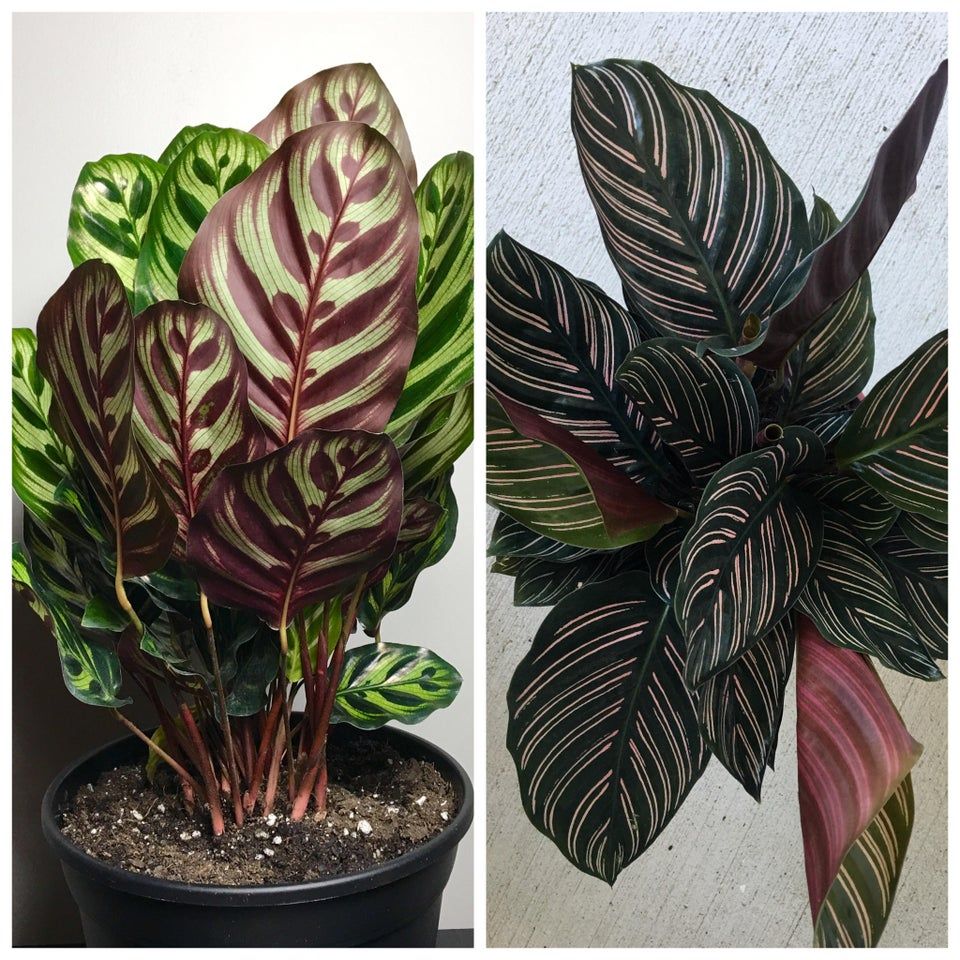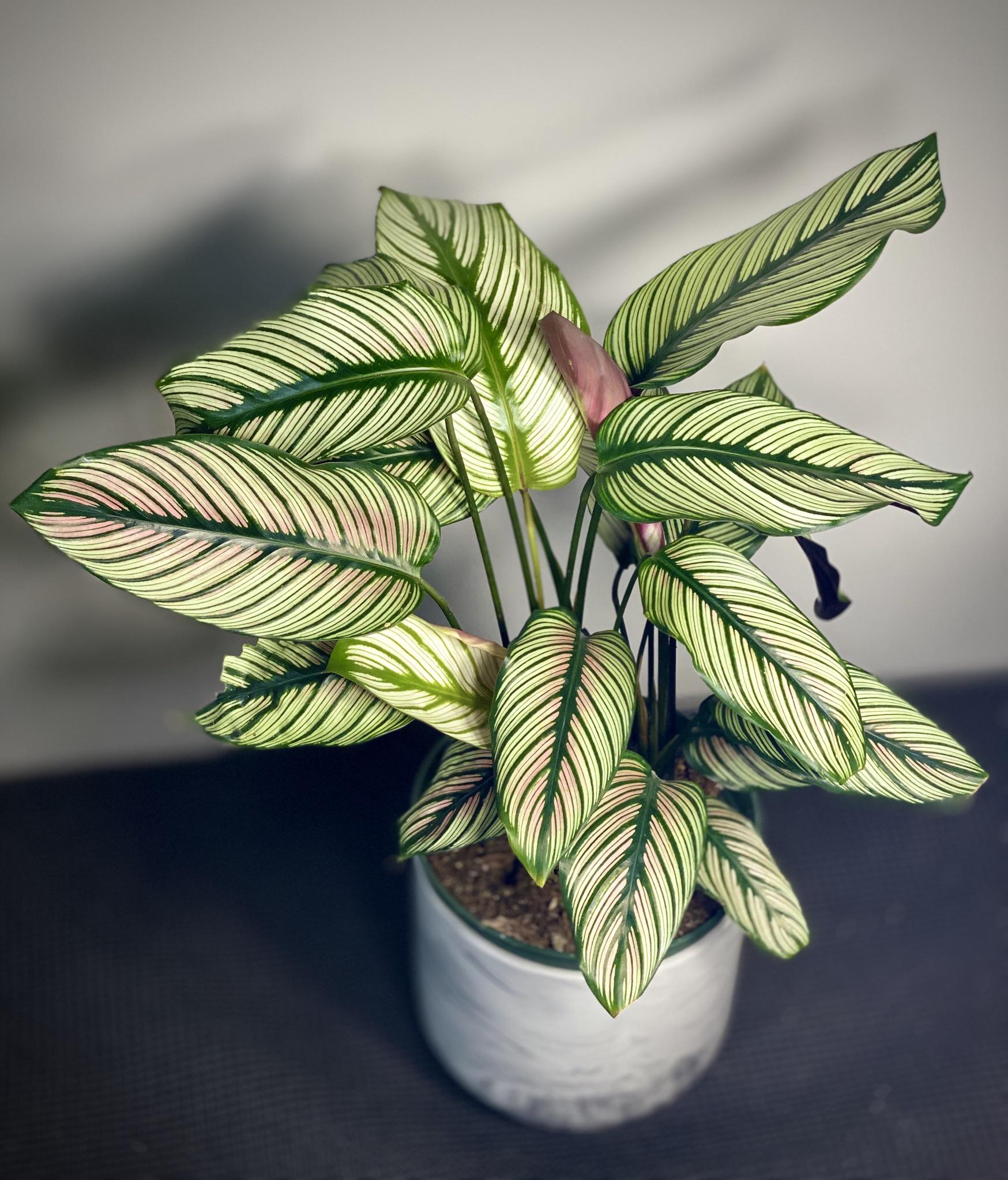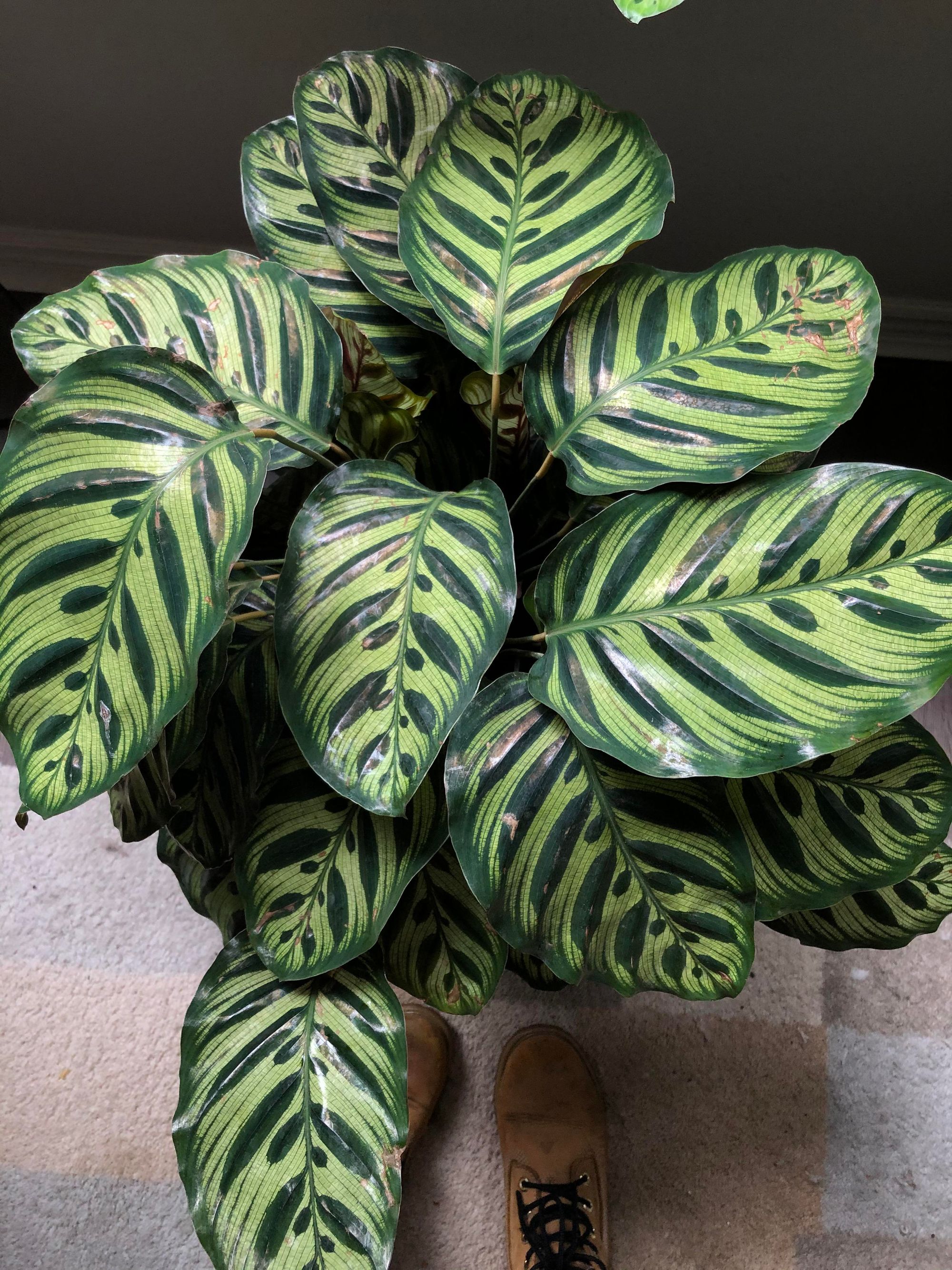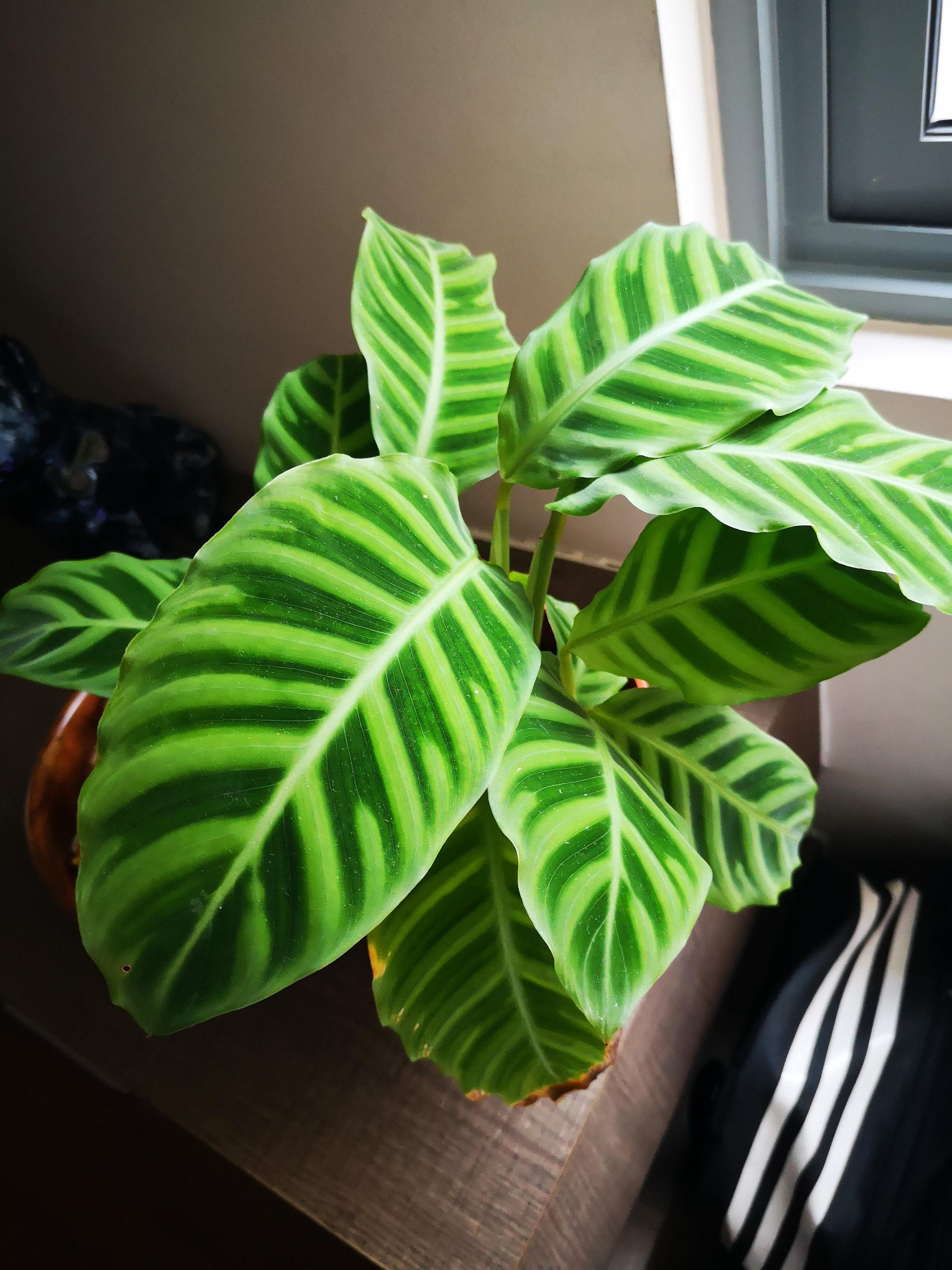Can Calathea Grow Outside?
Calatheas are one of the most popular house plants because of their impressive characteristics. From exotic foliage to extensive height, Calathea can be the best addition to your home.

Calatheas are one of the most popular house plants because of their impressive characteristics. From exotic foliage to extensive height, Calathea can be the best addition to your home.
To learn more about Calatheas in general, check out our guide on the Calathea Family
Although famous as an indoor plant, Calathea can be grown outside. Propagate the plant by dividing the mother roots to grow more plants from them. Plant it in an area with filtered or indirect bright sunlight. Make sure the soil is loamy, porous, and moist but not too muddy.
Look for areas with relatively stable temperatures between 16°C to 21°C. Calathea should be protected from winds or draughts that can lower the temperature.
Want to know how you can grow Calathea outside? Then, keep reading this guide and learn how to plant and care for them.
1. Pick the location
An ideal place to grow Calathea brings bright indirect light to the plant. Make sure the plant is not exposed to direct sunlight, as it can scorch the leaves.
The location should also be protected from winds or draughts, as they can lower the temperature. You should maintain a minimum temperature of 15°C. Calathea loves a humid temperature.
Calathea are used to growing under a shade or a canopy of trees on the forest floor. Therefore, they prefer indirect light instead of direct and harsh rays of the sun. This is to ensure their leaves are not burnt.
The leaves of the Calathea can also be seen moving throughout the day, sometimes folding upwards in the night and then becoming wider in the morning. That’s because Calathea’s leaves move in the direction of the sun as a way to maximize the absorption of light.

2. Opt for a moist sand
For Calathea, choose a potting mixture, which is airy and lightweight. Keep the soil moist because moisture is vital for the Calathea plant. Make sure the soil is slightly acidic. A pH of 6.5 provides the best environment for the plant.
When it comes to the pot itself, make sure the pot has drainage holes on the base. Drainage holes ensure that if the water ever clogs at the bottom of the pot, it can drain off.
Once a month, you can also use a liquid fertilizer with half the strength, usually at the start of spring, fall, and summer.
3. Choose a Calathea Variety
With over 300 species of Calathea present in nature, you have a lot of options to choose from for the exotic tropical bloom.

Some of the common houseplant varieties of Calathea are as follows:
- Calathea Zebrina(zebra plant): This variety has green stripes on its leaves with rich purple markings under it.
- Calathea Maykoana: This plant has purple undersides on its leaves, while green and white markings are on the top. It is called the peacock plant.
- Calathea Ornata: Commonly known as femme fatale, Calathea Ornata has white and pink leaves. However, it is considered to be very difficult to grow in household settings.
- Calathea crocata: This plant has plain leaves, but it is characterized by orange and red flowers.

4. Propagate the Plants
Calathea plants can be propagated by dividing the mother plant. This means you need to get a mature Calathea to make more plants from it. Here’s what you can do to propagate it:
Take the Calathea out of its pot
To divide the root system, you need to take the Calathea out of the pot carefully.
Simply lift the plant and shake any potting mix that might be present around its roots.
Run your fingers through the roots to carefully separate them.
Identify the offshoots
Offshoots are very easy to identify, as they are entirely separate. Make sure to locate them, as plants will grow from the middle of these sections.
Divide the sections
After identifying the offshoot sections, separate them carefully.
Trim the odd root if they are not separating easily. You can slice the plant a little. However, make sure there are enough roots on each plant section.
Place the root in potting mix or water
Depending on the size of the cutting and how mature the root system is, you can put the root in a fresh potting mix or water.
For instance, if the roots still need to grow, you can place them in water for a little while and then put them in the potting mix.
You can also cover your plant with a clear plastic bag. The setup will resemble the conditions present in a greenhouse. You can remove the bag once you see the plant growing.
5. Water your plants regularly with filtered water
Moisture is highly imperative for the Calathea to thrive. Therefore, keep the soil moist but not soggy. Water once every week or every few days, depending upon the environment in your home. But make sure the soil never dries out.
Water the Calathea regularly, but don’t make the soil soggy. If the leaves of the Calathea appear to be browning or withering, then it shows that your plant isn’t watered enough.
Tips for growing Calathea outside
1. Changing colors of the leaves
Over time, you will see Calathea’s leaves changing in shape or color. Here are some common sights and the causes for them:
- Leaves curling inwards happen when they are not watered enough. Once watered again, your leaves will bounce back again. Make sure to drain any excess water.
- Wilting or yellowing leaves occur when you overwater the leaves. So make sure you do not water the plant more than it requires.
- The base of the plant may be blackened if the compost is too soggy. The roots will also start to rot. Therefore, allow the compost to become dry before watering the plant again.
- Brown patches are seen on sunburned plants. You should not place your plant under direct sunlight.
- Leaves start fading if the plant is getting more light than what it requires. To resolve this, place your plant under a slight shade.
- If you see small brown patches with a yellow halo around them, then it means that you splashed the water on the leaves.
If you used tap water, then this might occur as well. Make sure to remove these leaves to prevent them from affecting the entire plant.
- Red spider mites might be seen on the Calatheas as well. They are very harmful to the plant. The upper part of the leaves can become mottled with fine webbing around it.
Use a magnifying glass to find the mites or eggs under the leaves. Also, spray plant oils or fatty acids on the plant.
- Brown tips around the leaf occur due to dry air. Make sure to improve the humidity around the leaves, for example, by misting them.
2. Only propagate healthy plants
You should propagate healthy plants as a sick plant can kill the mother roots. The divided plants will also not be able to grow and thrive.
3. Repot when the plant has outgrown
Plants should be repotted when they have grown outside of the pot. Healthy plants can be repotted once or twice a year during summers or spring.
Make sure to use a new potting mix when repotting. You can easily propagate the plants when repotting. However, wait for some time before doing this if your plant is still young and new, as the roots might not be mature and healthy.
4. Protect your plant from pests and diseases
Although Calatheas are usually not affected by pests or diseases, you might find some pests or bugs around the soil if they are kept in a very low position or the soil is overly dry.
The insect can hide easily if the leaves are white because the insects look like cotton wool.
To protect the plant from pests and diseases, move them in a position where they can get more light and water the plants regularly. You can also use a soap-based or oil-based pesticide to protect the plant.
5. Care for Calathea’s leaves
Regularly dust the leaves lightly and wipe them with a paper towel or damp cloth whenever there is excess water on them.
Avoid using a leaf-shine product over your leaves, as they contain harmful chemicals that can affect the health of your precious plants.
You should instead give a gentle stream to the leaves using lukewarm water. But make sure to wipe the leaves immediately after the water stream using a soft cloth, or your leaves can become discolored or even rot.
Conclusion
Calatheas are the perfect addition to any home, especially if you are looking for an exotic tropical plant. You can grow them outside and indoors.
To grow Calathea outside, propagate the plant by dividing the mother root. Make sure to plant it in an area where it gets indirect and bright sunlight. The soil should be moist and porous but not muddy. The temperature should be above 15°C and humid as well.
Once you have the right conditions to grow Calatheas and also care for them regularly, you will have a green, leafy plant in your house.
If you would like to learn more about other Calathea varieties - click any of the articles below!